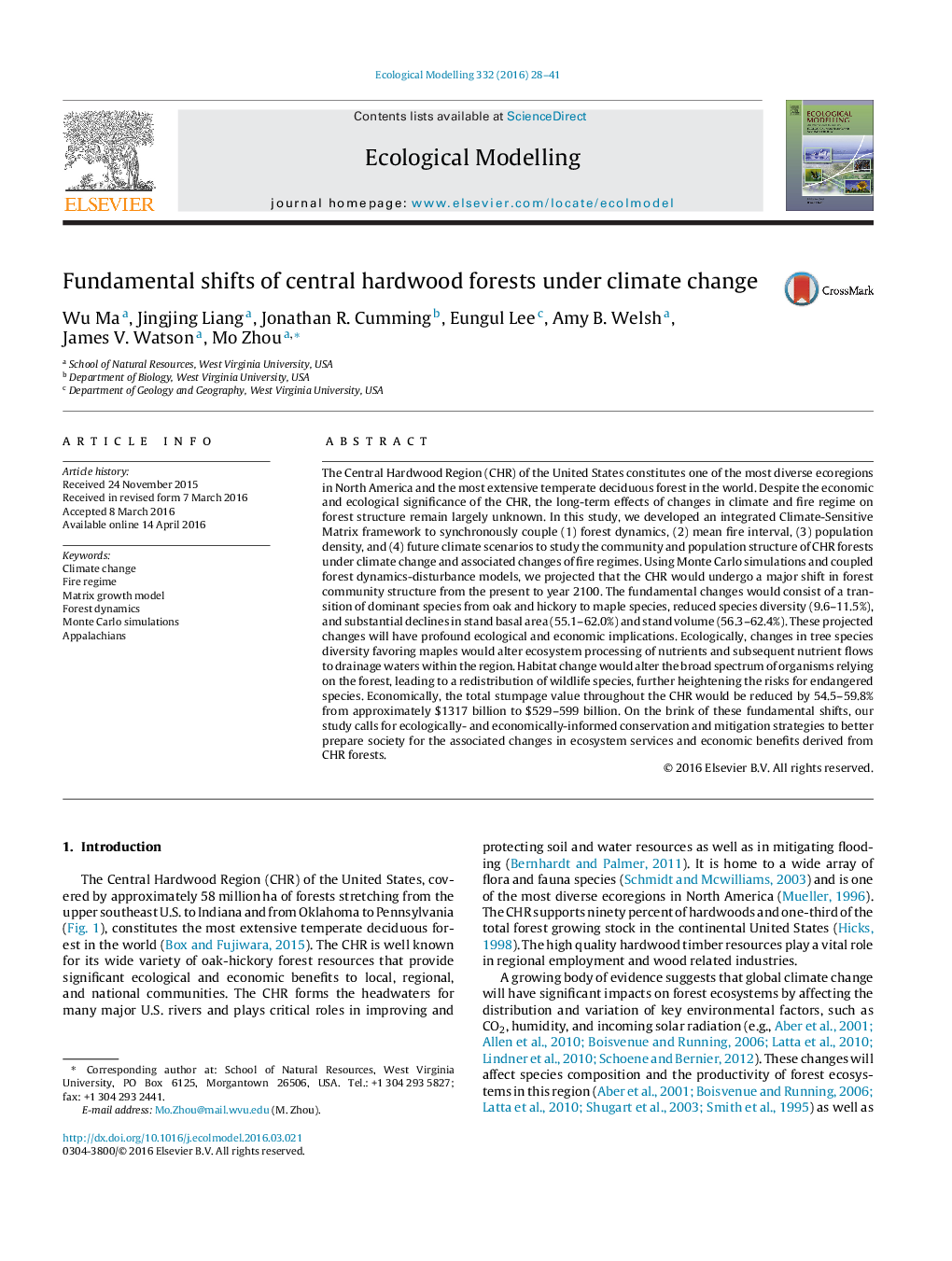| کد مقاله | کد نشریه | سال انتشار | مقاله انگلیسی | نسخه تمام متن |
|---|---|---|---|---|
| 4375550 | 1617415 | 2016 | 14 صفحه PDF | دانلود رایگان |
• An integrated framework was built to synchronously couple forest dynamics, mean fire interval, population density, and future climate scenarios for U.S. Central Hardwood Region forests.
• The framework predicted a transition of dominant species, reduced species diversity, and substantial declines in stand basal area and volume, from the present to 2100.
• These projections may have profound ecological and economic implications and call for adaptive management strategies and policies.
The Central Hardwood Region (CHR) of the United States constitutes one of the most diverse ecoregions in North America and the most extensive temperate deciduous forest in the world. Despite the economic and ecological significance of the CHR, the long-term effects of changes in climate and fire regime on forest structure remain largely unknown. In this study, we developed an integrated Climate-Sensitive Matrix framework to synchronously couple (1) forest dynamics, (2) mean fire interval, (3) population density, and (4) future climate scenarios to study the community and population structure of CHR forests under climate change and associated changes of fire regimes. Using Monte Carlo simulations and coupled forest dynamics-disturbance models, we projected that the CHR would undergo a major shift in forest community structure from the present to year 2100. The fundamental changes would consist of a transition of dominant species from oak and hickory to maple species, reduced species diversity (9.6–11.5%), and substantial declines in stand basal area (55.1–62.0%) and stand volume (56.3–62.4%). These projected changes will have profound ecological and economic implications. Ecologically, changes in tree species diversity favoring maples would alter ecosystem processing of nutrients and subsequent nutrient flows to drainage waters within the region. Habitat change would alter the broad spectrum of organisms relying on the forest, leading to a redistribution of wildlife species, further heightening the risks for endangered species. Economically, the total stumpage value throughout the CHR would be reduced by 54.5–59.8% from approximately $1317 billion to $529–599 billion. On the brink of these fundamental shifts, our study calls for ecologically- and economically-informed conservation and mitigation strategies to better prepare society for the associated changes in ecosystem services and economic benefits derived from CHR forests.
Journal: Ecological Modelling - Volume 332, 24 July 2016, Pages 28–41
